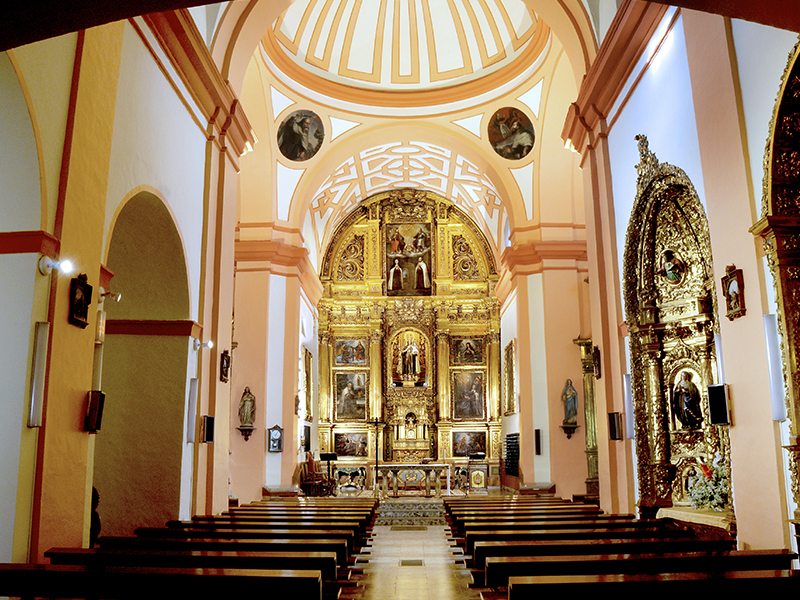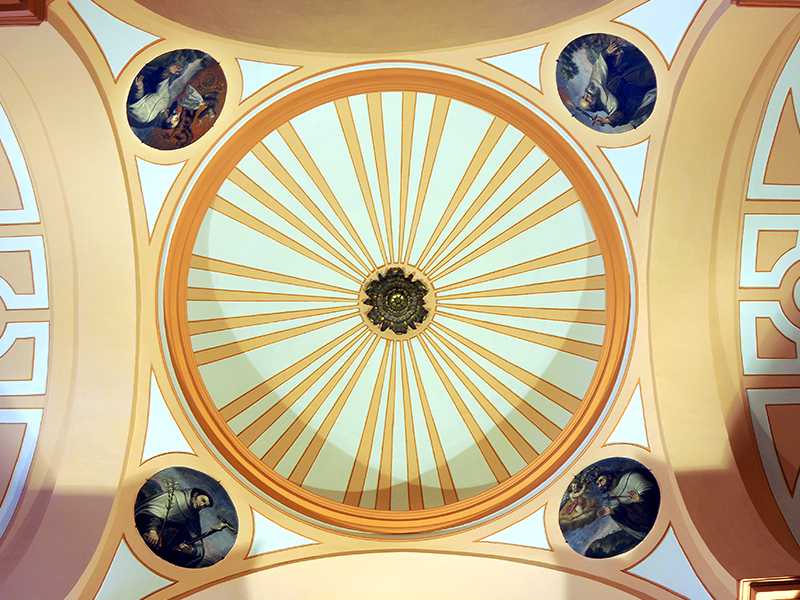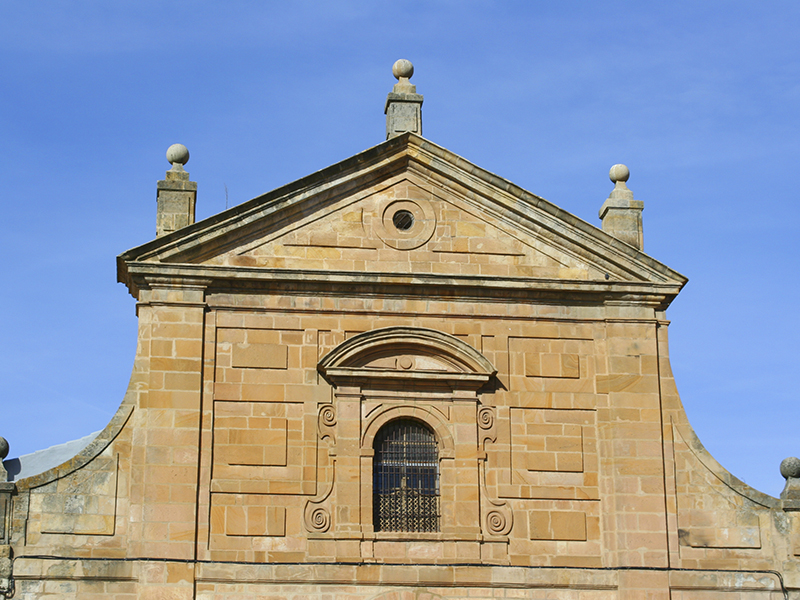CHURCH OF EL CARMEN
ONCE OUR LADY OF THE FIVE TOWNS
HISTORY
Apparently the church of the Five Towns was built, like the rest of the Romanesque churches of Soria, in the twelfth century, with the repopulation of the city. The Barefoot Carmelites came to Soria called by Bishop Don Alonso Velazquez in 1581, offering the noble Dona Beatriz de Belmonte his palace to be established.
The rReligious continued to use the old church but changed the name to the Holy Trinity that was in 1640 finally declared in ruins.
About eight years later, following traces of the Barefoot Carmelites, Fray Alonso de San José, would begin the construction of the new temple whose architectural works would end around 1670 but the decorative completion of the internal part lasted until the early 18th century.
THE BUILDING
In the church stand out the cover, austere in decoration and with geometric shapes. Five arches in the lower part of the facade (blinded on the ending parts), forming a large portico which is accessed by side stairs. In the center, a window decorated with a semicircular pediment that gives light to the choir of nuns and a triangular pediment above greater topped by acroteria. The interior has a Latin cross floorplan, austere, lime plaster walls without any other decoration but the cornice, from which the vaults appear. Also highlighting the plasterwork of the dome and chancel.
As for the furniture art, highlighting the eight altarpieces. The biggest, San Juan de la Cruz, Santa Teresa of the Child Jesus, Santa Teresa and San Joaquin are alluding to the patron saints and decoration despite the constructive style is measured, all of them between 1680 and 1700. Highlighting the absence of Solomonic columns (they are striated) so common in the Baroque, because they were banned in the Order of Barefoot Carmelites. Some authors attribute, altarpieces, Fray Francisco de Jesus, because of its similarity with the one this author made for the convent of Alba de Tormes. The altarpieces of the Child of Prague (formerly of San José, 1727) and San José and Santa Ana date from 1,760, in rococo style, many more variegated in its decoration. The image of San José is of Napolitan origin (early 18th century).
| Open Church during Mass schedule
Monday to Friday: 8.30, 12.00 and 19.30 h. Saturday: 19.30 h. Sundays: 09.00, 11.00, 12.30, 13.30 and 19.30 h. |
|
| 975211798 | |
| "Teresian Route" | |
| "Download info" |













